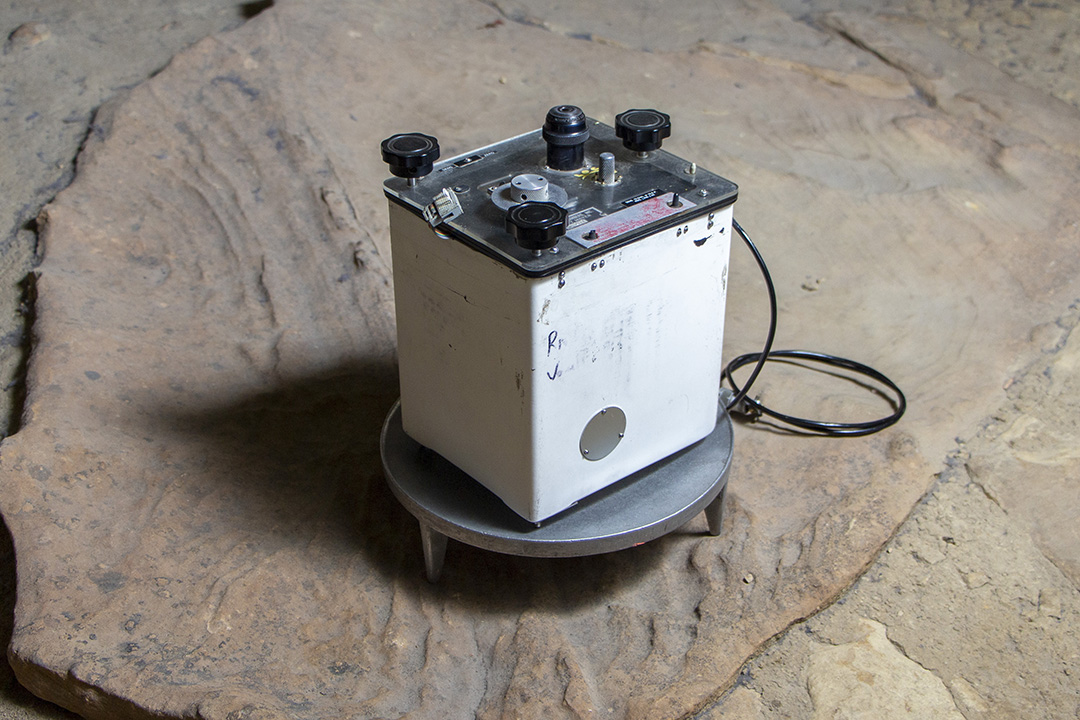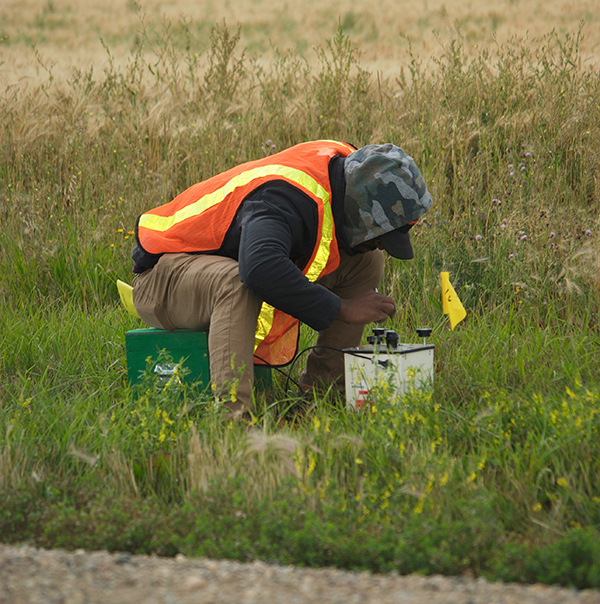
Uniquely USask: Rare gravity meter a cornerstone of the geophysics program
The scratched and faded surface of a metal cube stored in the Department of Geological Sciences is a hint at the item’s rugged history.
By Chris PutnamVirtually every graduate of the University of Saskatchewan (USask) geophysics program has laid hands on the instrument, a rare Lacoste and Romberg Model G gravity meter. For 50 years, it has helped make the geophysics field school in the College of Arts and Science one of the most comprehensive in North America.
The instrument is “basically a spring scale of the kind used to weigh fish,” except much more intricate and sensitive, said geological sciences professor Dr. Jim Merriam (PhD).
By measuring tiny differences in the pull of gravity, the meter gives geophysicists clues about the makeup of the ground below. More sophisticated gravity meters have since been invented, but this vintage box continues to get the job done.
“It will measure changes in gravity as small as one part in 100 million. I can’t think of another purely mechanical field instrument that can manage that sensitivity,” said Merriam.

The hand-assembled gravity meter was specially ordered by the department in 1970 at the request of Dr. Don Gendzwill (PhD), now a professor emeritus.
“They’re not made like TVs. There’s only a few manufactured every year,” said Gendzwill.
As a new faculty member in the early 1970s, Gendzwill helped design the original USask geophysics program, including establishing one of Canada’s first field courses in geophysics. The gravity meter was used for Gendzwill’s research programs and brought out each summer to train students at the field school.
Generations of students have since been entrusted with the delicate instrument, which had a $50,000 price tag in 1970.
“We supervised very closely,” Gendzwill said, chuckling.
Although gravity measurements are a fundamental technique in geophysics, most universities don’t own their own gravity meters due to the cost, noted Merriam. Students at the USask field school can tackle bigger projects than at other schools that rely on rented equipment, including a gravity survey of the eight-kilometre-wide impact crater near Elbow, Sask., at the most recent field school in August 2019.
Since the 1980s, the gravity meter has occasionally been loaned out to commercial geophysics companies. In return, those companies have brought their own state-of-the-art equipment to the field school each year and helped train students.
Thanks to these partnerships, said Merriam, “I think we expose our students to more techniques than any other field school.”

